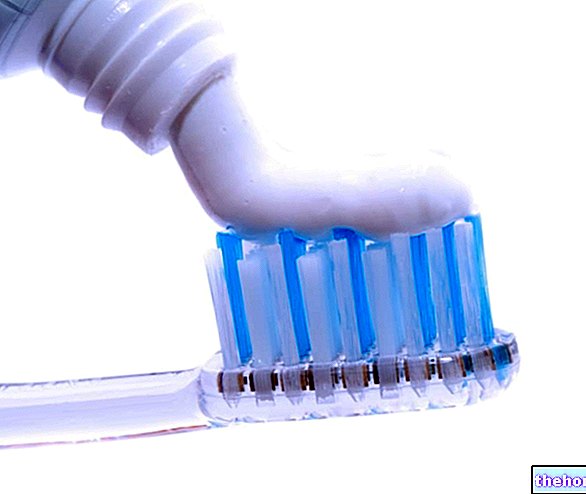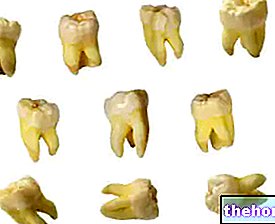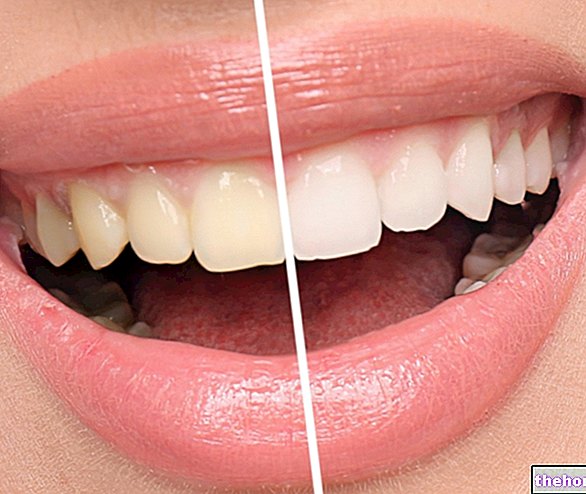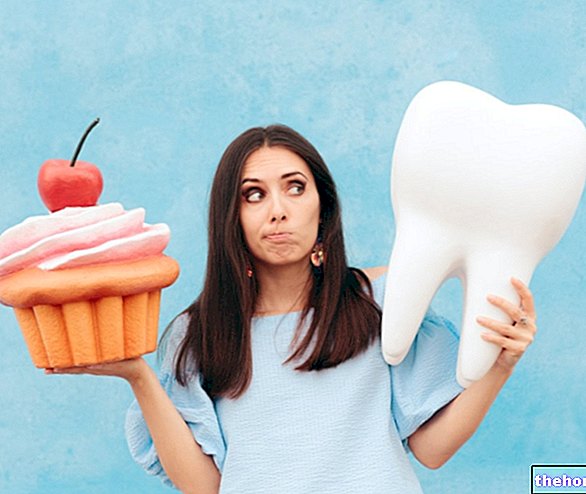
Symptoms
In the early stages, caries is asymptomatic. When the bacteria go deeper, the carious process gives rise to ailments such as toothache, halitosis and dentinal hypersensitivity.
Complications
Untreated caries can lead to complications such as pulpitis, dental abscess, dental cysts, dental granuloma, gingivitis and pyorrhea.
Causes
Caries has a multifactorial origin. The infectious process is caused by exogenous factors (plaque deposit, incorrect diet, smoking) and endogenous factors (reduction of saliva, structure of the teeth).
Risk factors
Certain factors can predispose to the development of tooth decay. Among the most noteworthy are: childhood / pubertal age, female sex, humid climate, pregnancy and poor oral hygiene.
Types of Caries
There are many variants of caries. Among the most common are: acute, chronic, relapsing, "dry or arrested", central, senile caries, caries from ionizing radiation, from acid vapors and from sugar workers.
Treatment
The filling is the treatment of choice for caries treatment.
In case of complicated caries associated with pulpits or granulomas, it is necessary to resort to devitalization or apicoectomy.
Tooth extraction is reserved for cases of extreme gravity, which cannot be healed by the aforementioned interventions.
Prevention
Caries prevention involves meticulous and regular oral hygiene on a daily basis, periodic check-ups by the dentist, professional scaling every 6-12 months and sealing of the molar teeth (as soon as the milk teeth fall out to make room for permanent ones).
. The accumulation and stagnation of food between the intercuspid furrows (that kind of basin that forms between the 4 tips of the tooth) explains, however, the greater predisposition of molars and premolars to the disease.
Superior Dental Arch

1) Third molar (wisdom tooth)
2) Second molar (12-year molar)
3) First molar (6-year molar)
4) Second premolar (2nd bicuspid)
5) First premolar (1st bicuspid)
6) Canine (cusp)
7) Lateral incisor
8) Central incisor
9) Central incisor
10) Lateral incisor
11) Canine (cusp)
12) First premolar (1st bicuspid)
13) Second premolar (2nd bicuspid)
14) First molar (6-year molar)
15) Second molar (12-year molar)
16) Third molar (wisdom tooth)
Lower Dental Arch

17) Third molar (wisdom tooth)
18) Second molar (12-year molar)
19) First molar (6-year molar)
20) Second premolar (2nd bicuspid)
21) First premolar (1st bicuspid)
22) Canine (Cusp)
23) Lateral incisor
24) Central incisor
25) Central incisor
26) Lateral incisor
27) Canine (cusp)
28) First premolar (1st bicuspid)
29) Second premolar (2nd bicuspid)
60) First molar (6-year molar)
31) Second molar (12-year molar)
32) Third molar (wisdom tooth)
, in some elective areas of the enamel. Initially, the caries has a typical chalk-white color, often brownish. If in this phase it is neglected, the carious infection assumes a typical progressively worsening course.Caries therefore spreads from the outside towards the inside of the dental element. It is a chronic disease with an extremely slow course: in most cases, the carious process evolves over a period of time ranging from 6 months to 2 years .
Caries cannot heal by itself: in fact, dental tissues do not possess regenerative capacity. As we will see, the only solution to remedy the cariogenic process is obturation * (or in the most serious cases, devitalization).
*Glossary
- Dental crown: section of the tooth that protrudes from the alveolar bone.
- Teeth included: teeth partially or totally covered by the gum.
- Dentin: very resistant bone tissue, located between dental enamel and pulp.
- Devitalization: surgery that involves the removal of the dental pulp severely damaged by infection, trauma or extensive dental chipping.
- Filling: surgery performed to restore teeth damaged by superficial or medium-sized caries.
- Dental pulp: A vital part of the tooth consisting of blood vessels, nerve endings and cells that produce dentin.
- Dental root: section of the tooth inserted inside the alveolar bone, inside which the dental pulp is contained.
- Dental enamel: translucent white tissue, the most rigid and mineralized in the body.
- Periodontal tissue: tooth support apparatus, consisting of gingiva, connecting elastic fibers and alveolar bone.
Other in-depth articles on Dental Caries
- Caries: causes and risk factors
- Types of Caries
- Caries: Symptoms, Complications Treatment
- Caries and nutrition




























